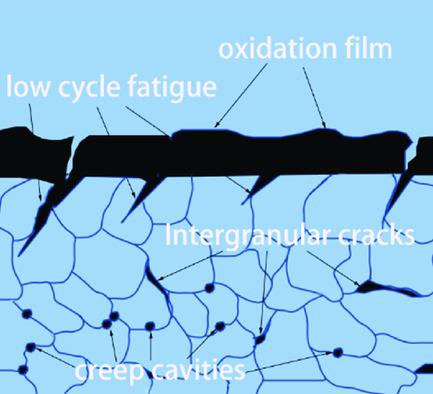当前位置:
X-MOL 学术
›
Steel Res. Int.
›
论文详情
Our official English website, www.x-mol.net, welcomes your
feedback! (Note: you will need to create a separate account there.)
Precipitation and Properties at Elevated Temperature in Austenitic Heat‐Resistant Steels—A Review
Steel Research International ( IF 1.9 ) Pub Date : 2020-12-05 , DOI: 10.1002/srin.202000378 Huatian Wang 1 , Huayun Du 1 , Yinghui Wei 1, 2 , Lifeng Hou 1 , Xiaoda Liu 1 , Huan Wei 1 , Baosheng Liu 2 , Jianwen Jia 1
Steel Research International ( IF 1.9 ) Pub Date : 2020-12-05 , DOI: 10.1002/srin.202000378 Huatian Wang 1 , Huayun Du 1 , Yinghui Wei 1, 2 , Lifeng Hou 1 , Xiaoda Liu 1 , Huan Wei 1 , Baosheng Liu 2 , Jianwen Jia 1
Affiliation

|
The austenitic heat‐resistant steels are significant materials used in boilers and nuclear reactors, owing to the excellent creep, fatigue, corrosion resistance, and mechanical properties. The precipitation and properties degenerate with the increasing temperature. It is necessary to clarify the main precipitation and properties under the service situation. Herein, the characteristic of main precipitation and the potential degraded mechanism of creep, fatigue, oxidation resistance, and corrosion resistance at high temperature are briefly reviewed. The main secondary phases under prolonged service environment include MX phase, M23C6 carbide, Z phase, Laves phase, and σ phase. Precipitation scattered uniformly is conductive to strength properties of steel and vice versa. Coarsening precipitation and the decrease of dislocation density are critical reason for the deteriorated mechanical properties at high temperature. The protective oxide films destroyed after exposure to boiler gas lead to failure of materials.
中文翻译:

奥氏体耐热钢的高温析出及性能研究进展
由于出色的蠕变,疲劳,抗腐蚀和机械性能,奥氏体耐热钢是用于锅炉和核反应堆的重要材料。沉淀和性质随温度升高而退化。在使用情况下,有必要弄清主要的降水和性质。在此,简要回顾了主要析出物的特征以及高温下的蠕变,疲劳,抗氧化和抗腐蚀的潜在降解机理。长期使用环境下的主要第二相包括MX相,M 23 C 6碳化物,Z相,Laves相和σ相。均匀分散的沉淀有助于钢的强度性能,反之亦然。粗大的沉淀和位错密度的降低是高温下机械性能下降的关键原因。接触锅炉气体后破坏的保护性氧化膜会导致材料损坏。
更新日期:2021-02-03
中文翻译:

奥氏体耐热钢的高温析出及性能研究进展
由于出色的蠕变,疲劳,抗腐蚀和机械性能,奥氏体耐热钢是用于锅炉和核反应堆的重要材料。沉淀和性质随温度升高而退化。在使用情况下,有必要弄清主要的降水和性质。在此,简要回顾了主要析出物的特征以及高温下的蠕变,疲劳,抗氧化和抗腐蚀的潜在降解机理。长期使用环境下的主要第二相包括MX相,M 23 C 6碳化物,Z相,Laves相和σ相。均匀分散的沉淀有助于钢的强度性能,反之亦然。粗大的沉淀和位错密度的降低是高温下机械性能下降的关键原因。接触锅炉气体后破坏的保护性氧化膜会导致材料损坏。











































 京公网安备 11010802027423号
京公网安备 11010802027423号